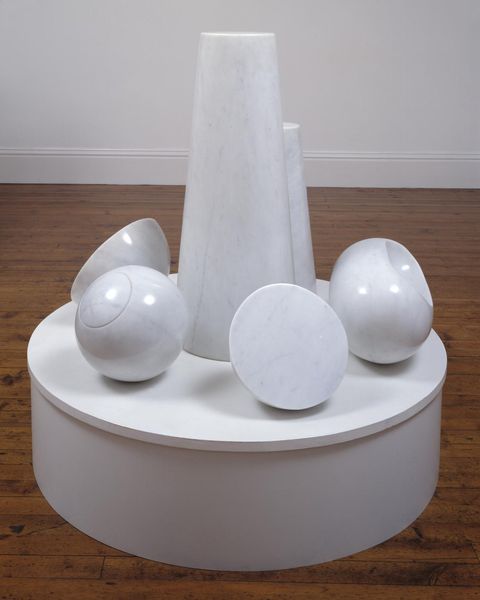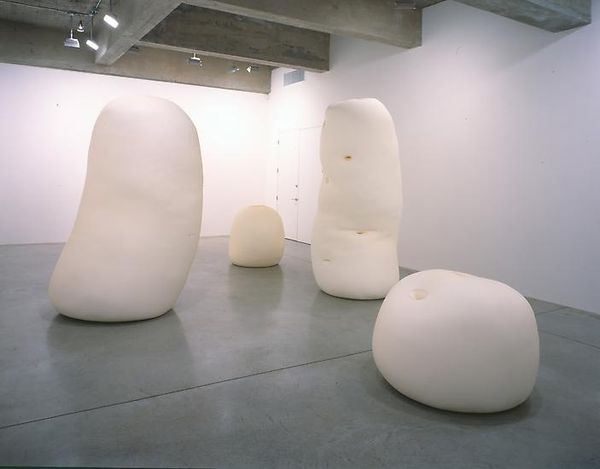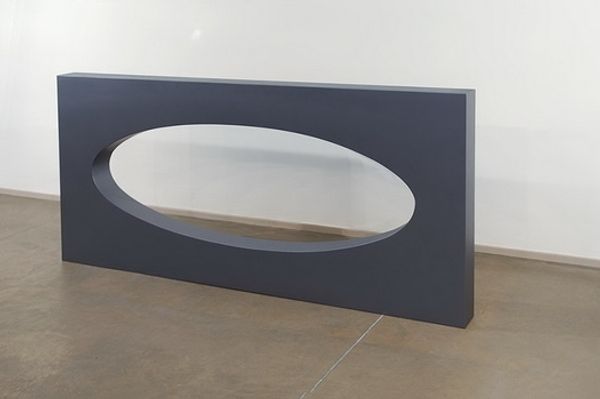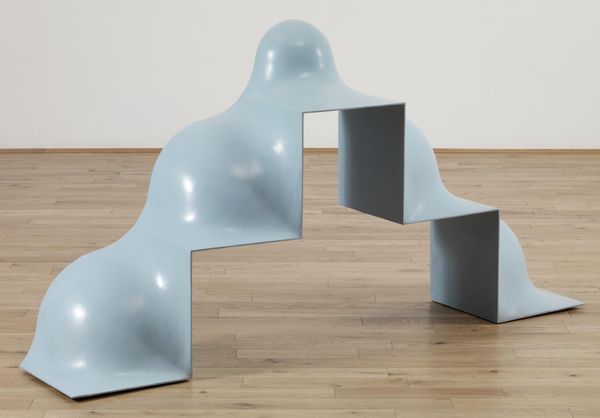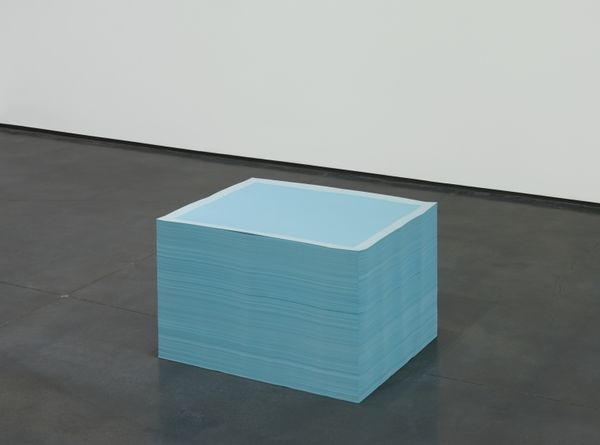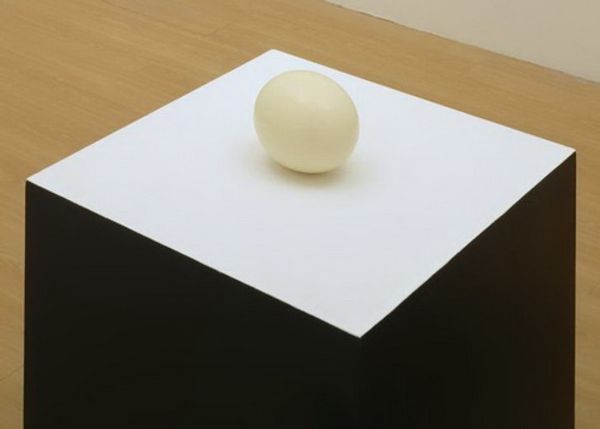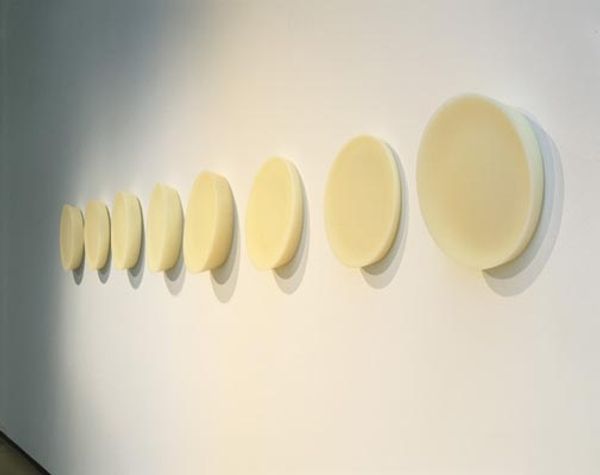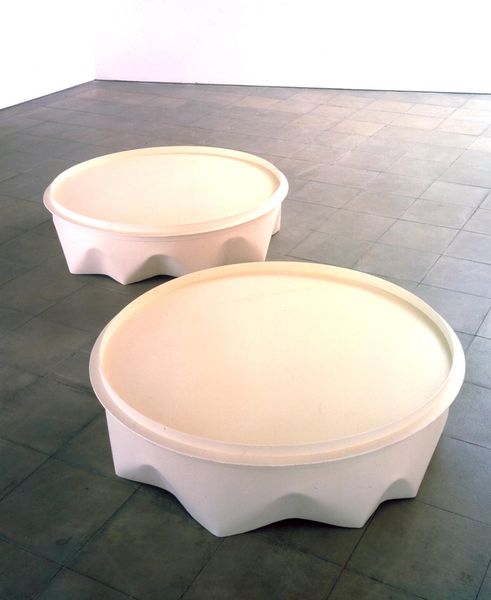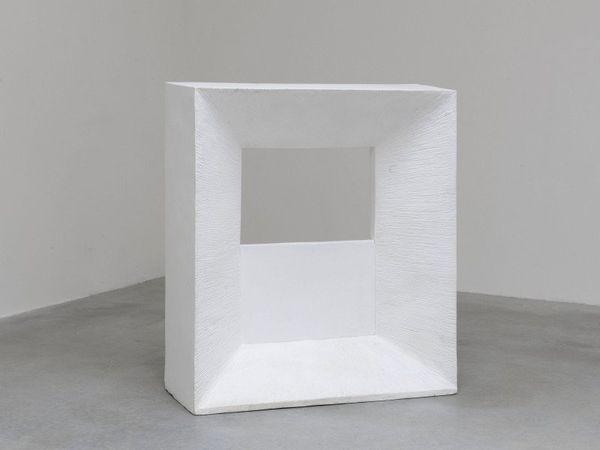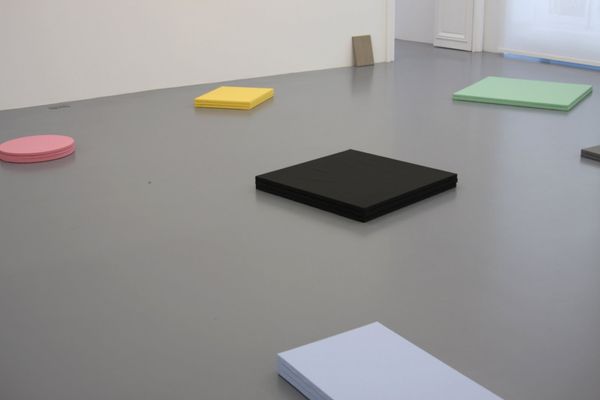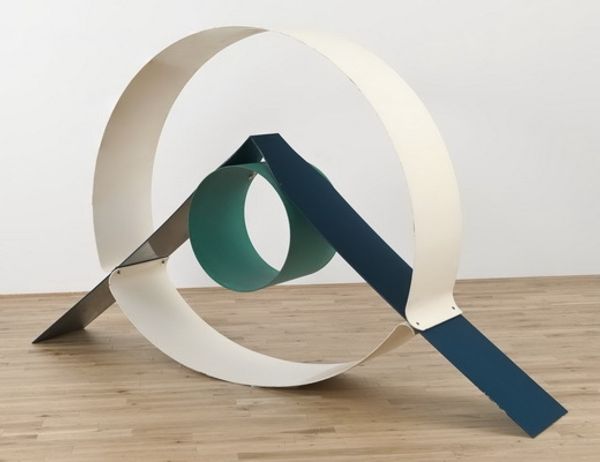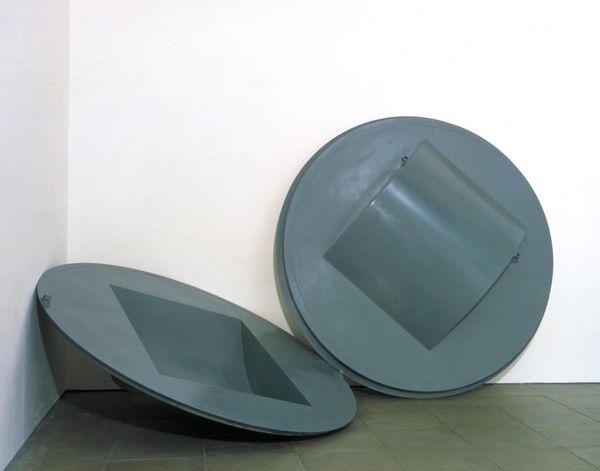
Dimensions: object: 475 x 3000 x 2280 mm
Copyright: © Edward Allington | CC-BY-NC-ND 4.0 DEED, Photo: Tate
Curator: Here we have Edward Allington’s "Ideal Standard Forms" from the Tate Collections. What's your initial reaction? Editor: They're strikingly austere. The forms, scattered on the floor, almost like architectural models, evoke a sense of quiet contemplation. Curator: Allington is playing with Platonic ideals, those perfect shapes that exist only in theory. Notice how each form is subtly flawed, undermining the very idea of perfection. Editor: It makes me think about the labour involved, shaping and perhaps casting these forms. The slightly rough textures suggest a very human process. Curator: The arrangement itself is critical. The spaces between the forms are as important as the objects themselves, creating a dynamic visual language. Editor: I agree. Considering the scale of the objects in relationship to the floor, the artist really highlights how we engage with these materials in a physical space. Curator: Precisely, and that interplay between form and space really invites the viewer to consider the philosophy behind this artwork. Editor: Indeed, it's an artwork that challenges our perception of perfection and making, provoking thoughtful discussion.
Comments
tate 6 months ago
⋮
http://www.tate.org.uk/art/artworks/allington-ideal-standard-forms-t05214
Join the conversation
Join millions of artists and users on Artera today and experience the ultimate creative platform.
tate 6 months ago
⋮
Edward Allington made these works by smearing plaster over clay shapes, then digging the clay out so that only the crude plaster moulds were left. By destroying the ‘original’ clay shapes but keeping the moulds, he questions received ideas about authenticity and imitation. As a teenager, Allington was interested in the Greek philosopher Plato (429-347 BC). Plato claimed that all objects in the physical world are degraded copies of an authentic ideal, which humans cannot perceive. Allington later called Plato a ‘cheat’ and concluded that ‘in a false world, the only truth is in the lie’. Gallery label, September 2004
